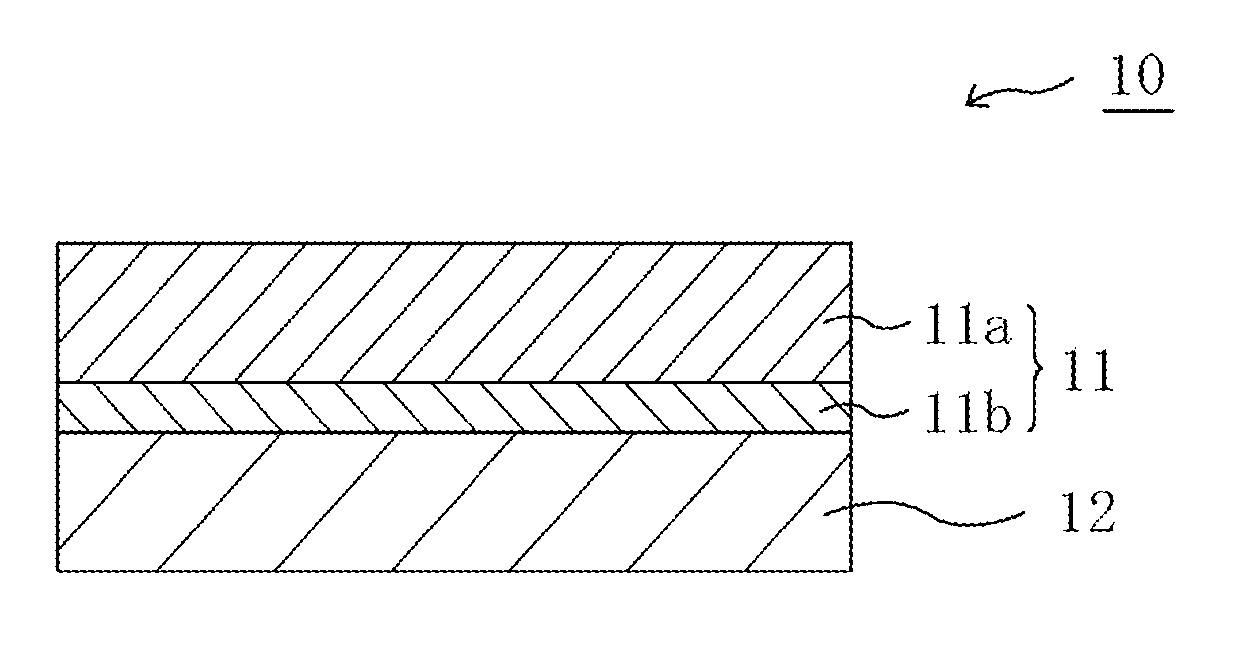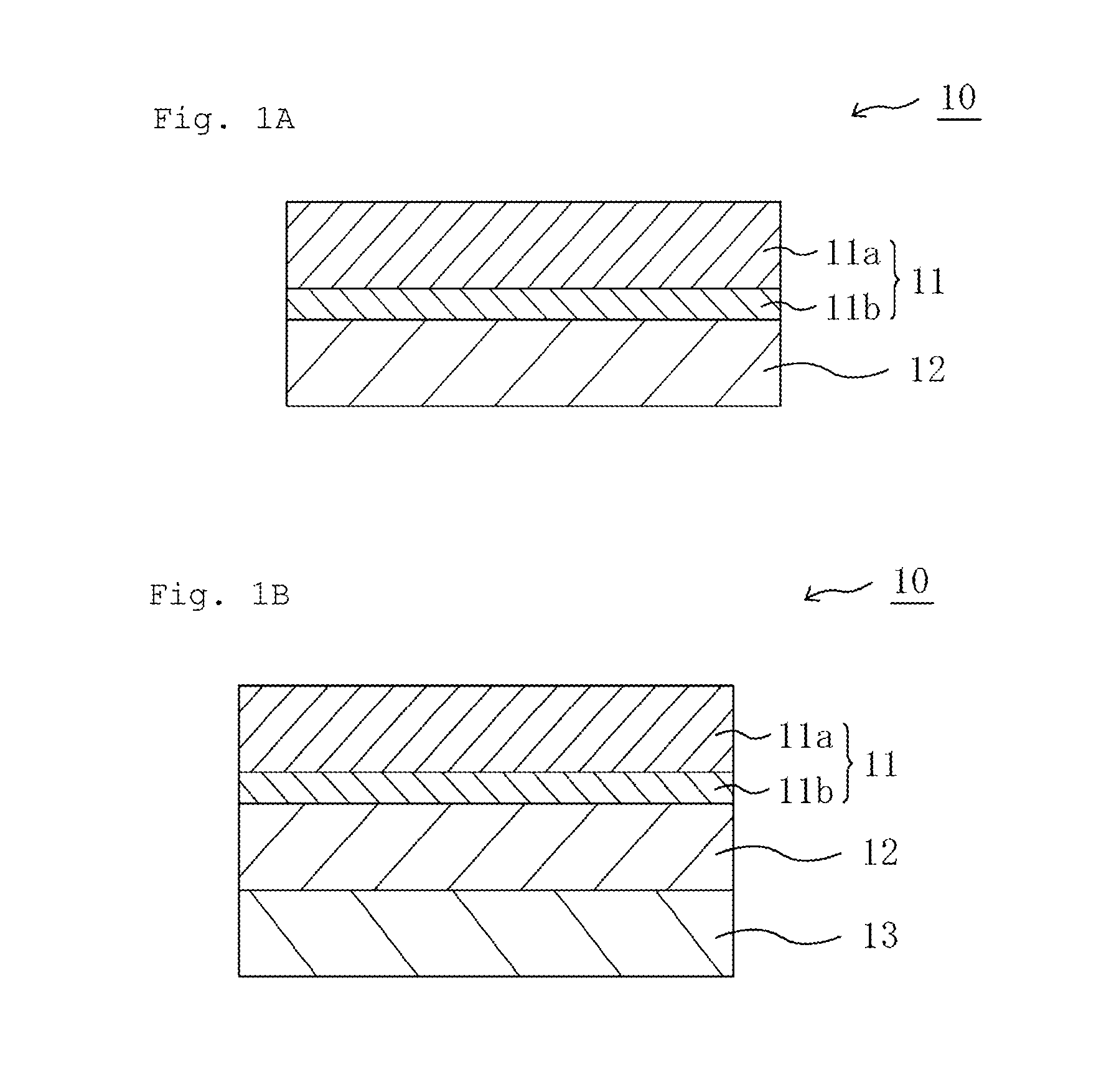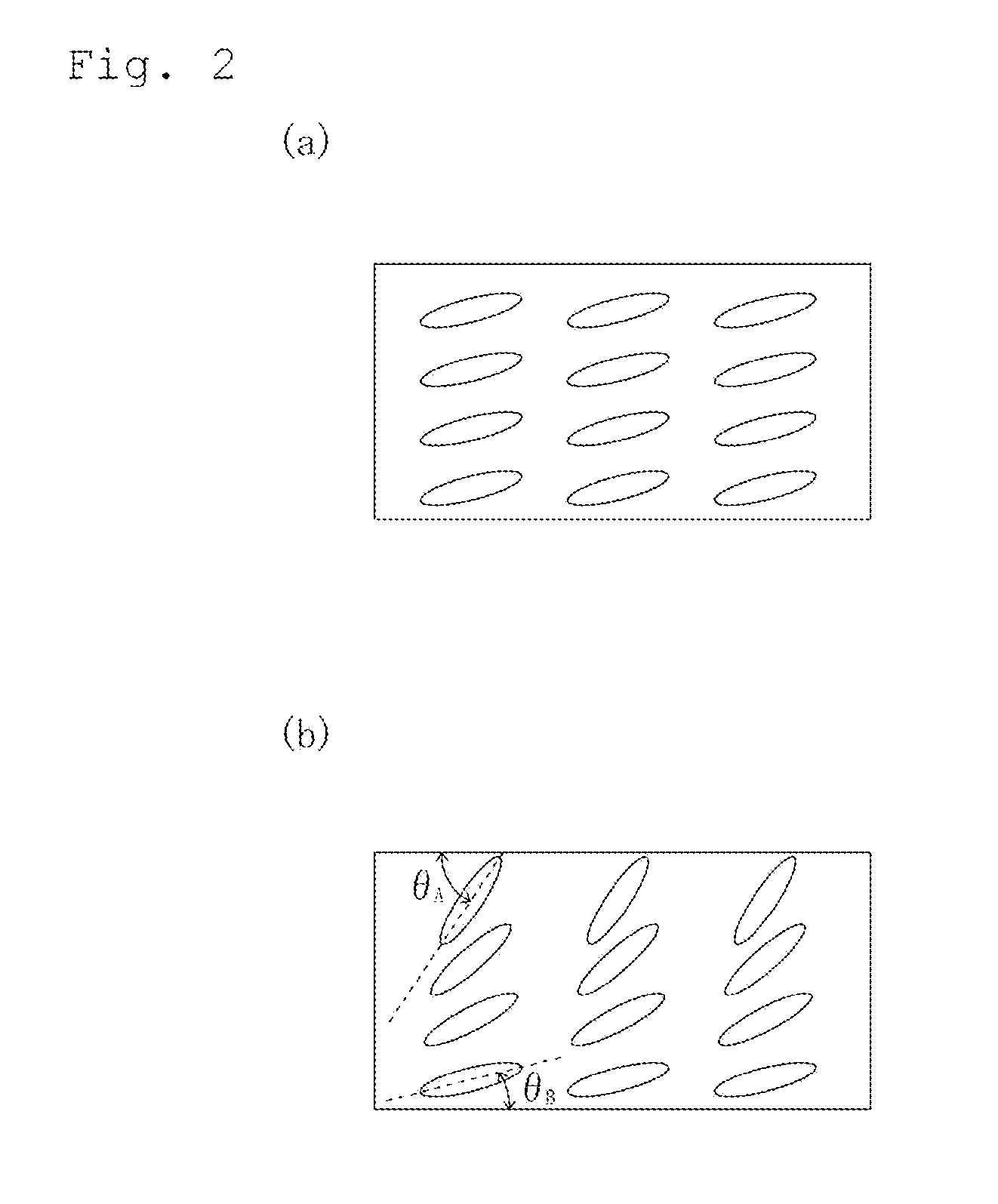Laminate optical body, optical film, liquid crystal display apparatus using said optical film, and method for producing laminate optical body
a technology of laminate optical body and retardation film, which is applied in the direction of instruments, other domestic articles, synthetic resin layered products, etc., can solve the problems of large number of problems, difficult to realize optical properties that can be put into practical use, and difficult to express the slow axis of retardation film in the td of raw film, etc., to achieve excellent production efficiency, small display unevenness, and extremely small retardation unevenness of laminate optical body
- Summary
- Abstract
- Description
- Claims
- Application Information
AI Technical Summary
Benefits of technology
Problems solved by technology
Method used
Image
Examples
reference example 1
(Production of Polarizing Film)
[0175]A polyvinyl alcohol resin (manufactured by The Nippon Synthetic Chemical Industry Co., Ltd., product name: “Gohsenol NH-18,” degree of saponification: 98 to 990) was dissolved in hot water, and then the solution was cooled. Thus, a 7-wt % aqueous solution of polyvinyl alcohol was prepared. Meanwhile, a norbornene-based resin film (manufactured by JSR Corporation, product name: “ARTON,” thickness: 100 μm) was prepared as a base material. The above-mentioned aqueous solution was applied to the surface of the base material, and was then dried at 100° C. for 10 minutes. Thus, a polyvinyl alcohol thin film having a thickness of 7 μm was formed on the base material. A laminate of the base material and the thin film thus obtained was stretched in its short direction at a stretching temperature of 140° C. and a stretching ratio of 4.5 times. The stretched laminate had an entire thickness of 60 μm and the polyvinyl alcohol thin film had a thickness of 3 μ...
reference example 2
(Production of Polarizing Film)
[0176]A polyvinyl alcohol resin (manufactured by The Nippon Synthetic Chemical Industry Co., Ltd., product name: “Gohsenol NH-18,” degree of saponification: 98 to 99%) was dissolved in hot water, and then the solution was cooled. Thus, a 7-wt % aqueous solution of polyvinyl alcohol was prepared. Meanwhile, a norbornene-based resin film (manufactured by JSR Corporation, product name: “ARTON,” thickness: 100 μm) was prepared as a base material. The above-mentioned aqueous solution was applied to the surface of the base material, and was then dried at 100° C. for 10 minutes. Thus, a polyvinyl alcohol thin film having a thickness of 7 μm was formed on the base material. A laminate of the base material and the thin film thus obtained was stretched in its short direction at a stretching temperature of 140° C. and a stretching ratio of 4.5 times. The stretched laminate had an entire thickness of 60 μm and the polyvinyl alcohol thin film had a thickness of 3 μ...
reference example 3
(Polarizing Plate)
[0177]A commercially available polarizing plate (manufactured by Nitto Denko Corporation, product name: “NPF-TEG1465DU”) having a construction “protective film / polarizer / protective film” was used. The in-plane retardation of the protective film on a liquid crystal cell side of the polarizing plate is substantially zero. 3n addition, the polarizing plate has a single axis transmittance of about 44%, and has an absorption axis in its lengthwise direction (MD).
PUM
| Property | Measurement | Unit |
|---|---|---|
| thickness | aaaaa | aaaaa |
| tilt angle | aaaaa | aaaaa |
| thickness direction retardation | aaaaa | aaaaa |
Abstract
Description
Claims
Application Information
 Login to View More
Login to View More - R&D
- Intellectual Property
- Life Sciences
- Materials
- Tech Scout
- Unparalleled Data Quality
- Higher Quality Content
- 60% Fewer Hallucinations
Browse by: Latest US Patents, China's latest patents, Technical Efficacy Thesaurus, Application Domain, Technology Topic, Popular Technical Reports.
© 2025 PatSnap. All rights reserved.Legal|Privacy policy|Modern Slavery Act Transparency Statement|Sitemap|About US| Contact US: help@patsnap.com



